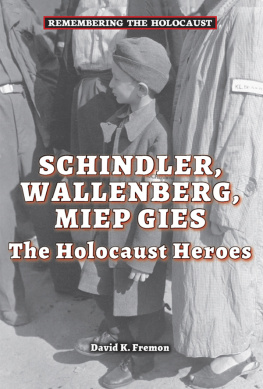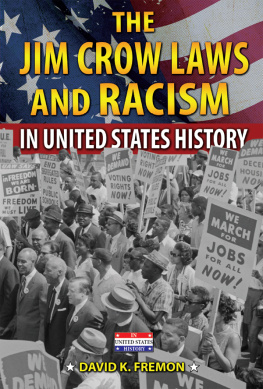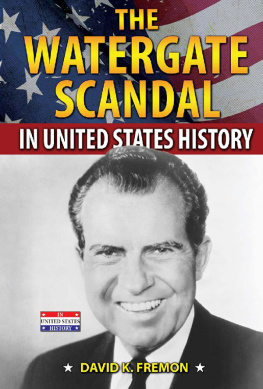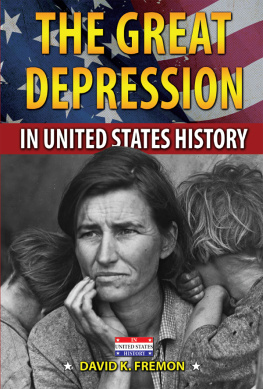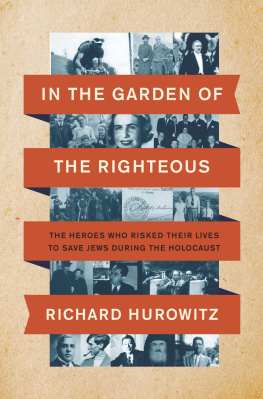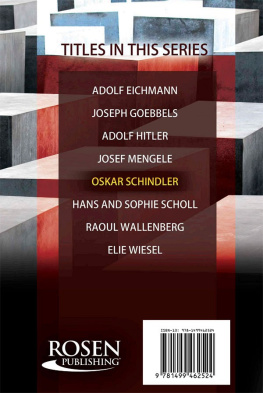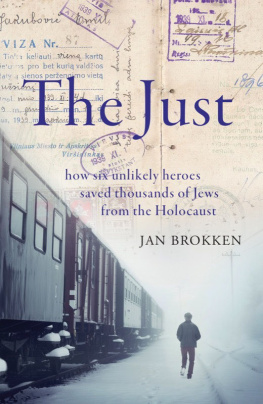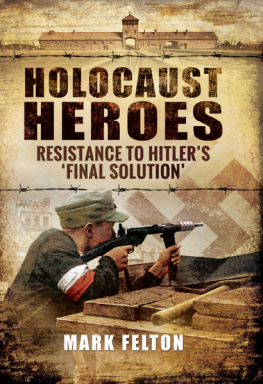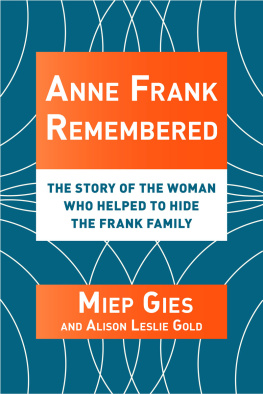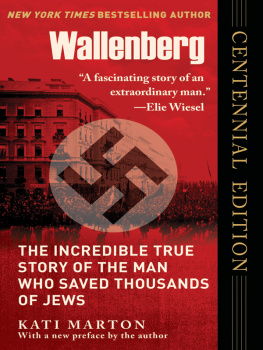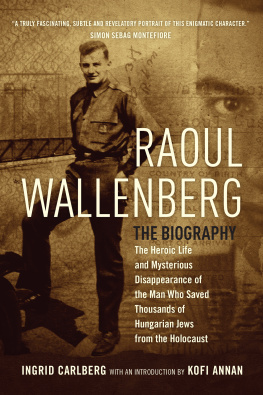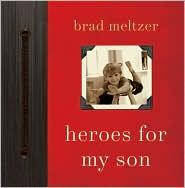They Saved Thousands
The Holocaust was the widespread slaughter of more than 11 million peopleincluding 6 million Jewsby the Nazis.
The heroes of the Holocaust were individuals who risked their own lives, and those of their families, to save thousands of Jews from certain death. Rescuers hid Jews in their basements and attics, forged false identification papers, and even transported Jews across borders to save as many as possible from the Nazi death camps. Many rescue attempts failed, and turned would-be rescuers into victims of the Nazis. Author David K. Fremon recalls the bravery of rescuers who saved thousands from the horrors of the Holocaust.
...the author provides a compelling factual presentation.
The Book Report
...an on-target accurate overview...
School Library Journal
ABOUT THE AUTHOR
David K. Fremon has written many magazine and newspaper articles and books dealing with history. Several of his books show past injustices and attempts to correct them.


Image Credit: National Archives Collection of WWII War Crime Records, Entry 1, United States Counsel for the Prosecution of Axis Criminality, United States Evidence Files, 194546, PS1061 (Stroop Report)
German soldiers round up Jews who participated in the Warsaw ghetto uprising.
Silent night, holy night, All is calm, all is bright.... On Christmas Eve, 1942, a corner building in the city of Nice in southern France seemed to reflect the serenity of the beloved Christmas carol. Suddenly, the clop-clop-clop of boots broke the silence. Soldiers had entered the buildings side door. Ever alert, Kate Rossi heard the noise. The seventeen-year-old French girl woke the three children in her care. They hurried out the front door and ran to the Catholic church across the street. We didnt take chances, Kate said later. If they had spotted the boys, it would have been the end. The four spent the night in the church, giving thanks to God that they had evaded capture to live another day.
The three children with Kate were not Catholic. They were Jews fleeing certain death at the hands of Nazi soldiers during World War II. Their mother had left them with Kates mother before escaping to Spain. When Kates mother died suddenly, the teenager took over their care. She called them by Christian names, taught them the rituals of the Catholic Church, and fed and clothed them. Most important, she kept a distance between them and hostile troops.
German dictator Adolf Hitler sought to kill every Jew in Europe, in a systematic slaughter known as the Holocaust. Tragically, this mass murder proved highly successful. Some 6 million Jews perished at the hands of the Nazis and their alliestwo out of every three Jews in Europe and one third of the Jews in the world.
The total would have been higher if not for the Kate Rossis of Europe. During World War II there were four types of people in Europe: First, there were people who fought and worked to eliminate Jews and undesirables from the earth. Then, there were victims, innocent people whose only crime was their religion, sexual orientation, or political belief. There were also bystanders, which included most people. They did not actively participate in Nazi atrocities, yet they did nothing to prevent them. By their inaction, they permitted the horrors to continue. However, like Kate Rossi, thousands of others did what they could to save one or more Jews from death. Usually, these efforts came at the risk of their own lives. They were the heroes.
During World War II, heroism took many forms. Gentiles (non-Jews) hid people in their basements or barns. Others created false identity papers or led refugees to safety. Even some Nazi officers helped save lives by not enforcing all rules or by secretly alerting Jews of upcoming trouble. Some people took great pains to record the atrocities they witnessed. Jews fought for their lives by joining partisan (guerrilla) units or rebelling in ghettos or death camps. Some Jews died while resisting the Nazis and saving other Jews.
This is the story of some of those heroes.
Followers of the Jewish religion have lived in Europe for more than two thousand years. Often they were accepted for who they werepious and hard working people. Not everyone, however, tolerated his or her Jewish neighbors.
As Christianity grew in Europe, Jews often faced persecution. Many Christian leaders blamed Jews for Jesus crucifixion, even though pagan Romans were the ones who crucified him. Christ killer became a commonly used term for people of the Jewish faith.
Throughout Europe, Christians outnumbered Jews. They generally had more money, and they had more power. As historian Raul Hilberg noted, The Jews had always been a minority, always in danger, but had learned that they could avert or survive destruction by... appeasing their enemies.
When Jews were allowed to live freely, they and their communities prospered. Europe benefited from the wisdom and skills of many Jews, including Dutch philosopher Baruch Spinoza, German composer Felix Mendelssohn, and Austrian psychoanalyst Sigmund Freud.
Jews flourished particularly in Germany. They gained recognition on a worldwide scale. Although the Jews as a group made up less than one percent of Germanys population, they won eleven of thirty-seven Nobel prizes issued to Germans before 1933.
Despite these accomplishments, anti-Semitic (anti-Jewish) discrimination continued. Artists drew Jews as short, fat, unshaved, and big-nosed. Humorists illustrated them as vultures, vampires, toads, and spiders.
Hundreds of anti-Semitic newspapers existed in Germany during the early 1900s. They accused Jews of raping women, killing children in ritual sacrifices, committing financial robbery, and any other crime imaginable. One such anti-Semitic periodical, Ostara, particularly influenced one devoted reader. His name was Adolf Hitler.
When I first met Adolf Hitler, his anti-Semitism was already pronounced, recalled boyhood friend August Kubizek. And although his experiences in Vienna might have deepened this feeling, they certainly did not give birth to it.
The eighteen-year-old Hitler left his home in Linz in 1907. He hoped to find fame and fortune as an artist in the Austrian capital of Vienna. But once there, he was rejected by an art school. He suffered from depression, and his hatred of the Jews was ever increasing. Wherever I went, I began to see Jews, Hitler claimed. I often grew sick to my stomach from [their] smell.
During World War I Hitler fought well for the losing German army. Most historians claim that the Western allies superior troop and weapon strength defeated the Germans. Hitler blamed the Jews.
After the war, Hitler joined the German Workers Party (DAP), whose name he later changed to the National Socialist German Workers Party (NSDAP). Most Germans ignored this party as just another extremist fringe group. But in November 1923, Hitlers followers tried to overthrow Germanys government. This ill-advised Beer Hall Putsch earned Hitler a five-year prison term. He was paroled after nine months.
Hitler kept busy while in prison. He started writing Mein Kampf (My Struggle), an autobiography that also laid out his plan for dealing with Germanys enemies, especially the Jews. The book was published in two volumes, the first appearing in 1925 and the second in 1926. Hitler left no doubt whom he considered Germanys enemies: Communists, liberals, labor unions, and, most of all, Jews.

